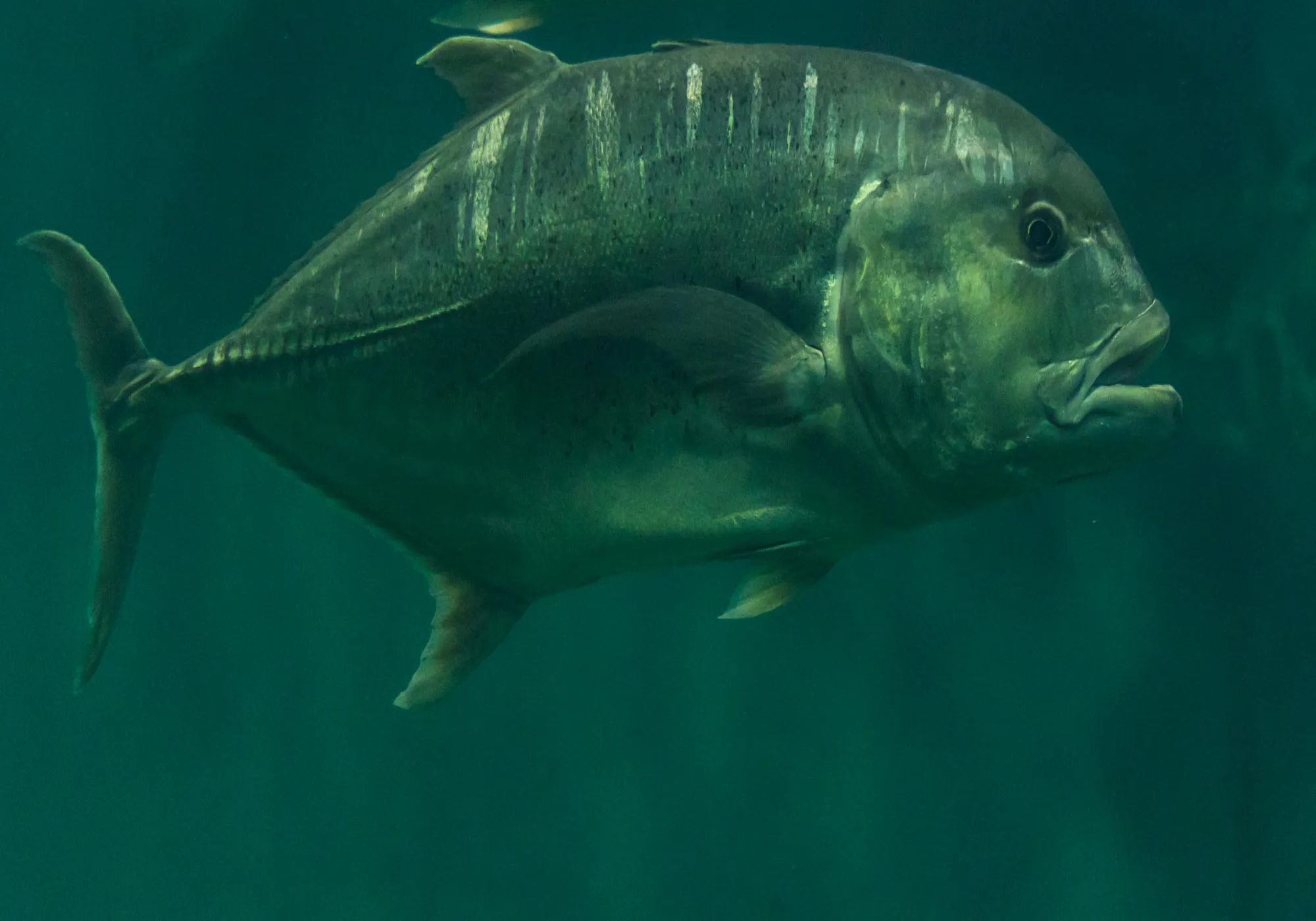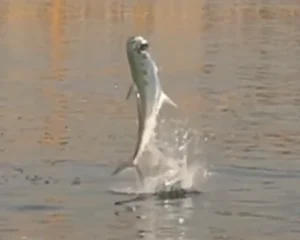Read in Urdu Language Click Here.
Exploring the Diversity of Trevally Fish: Types, Characteristics, and Conservation
Introduction:
Trevally fish, also known as Jacks or Kingfish, encompass a diverse group of marine species found across various oceanic regions. This article delves into the intriguing world of Trevally fish, examining their types, characteristics, habitat, and the crucial role they play in marine ecosystems.
Types of Trevally Fish:
Trevally fish, belonging to the Carangidae family, exhibit a wide range of species diversity. Some prominent types include:
-
Giant Trevally (Caranx ignobilis)
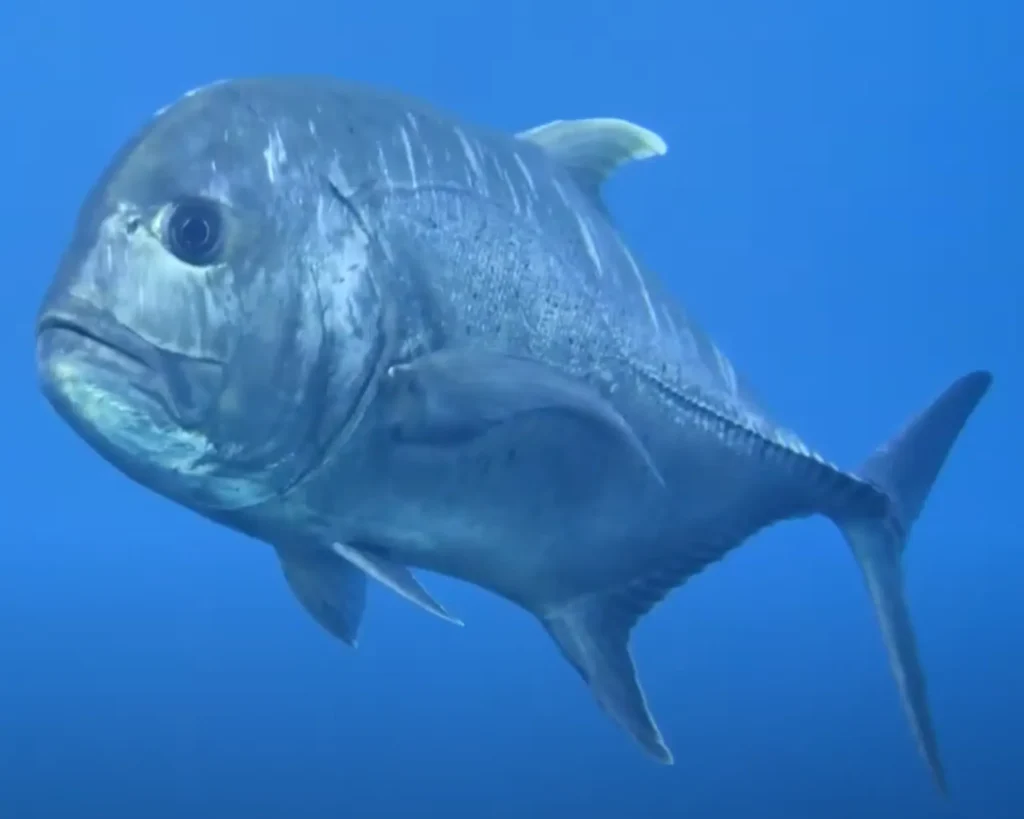
Known for their impressive size and strength, Giant Trevally are apex predators found in tropical and subtropical waters of the Indian and Pacific Oceans. They are prized by anglers for their challenging fights and are known to hunt in schools, making them formidable predators.
-
Bluefin Trevally (Caranx melampygus)
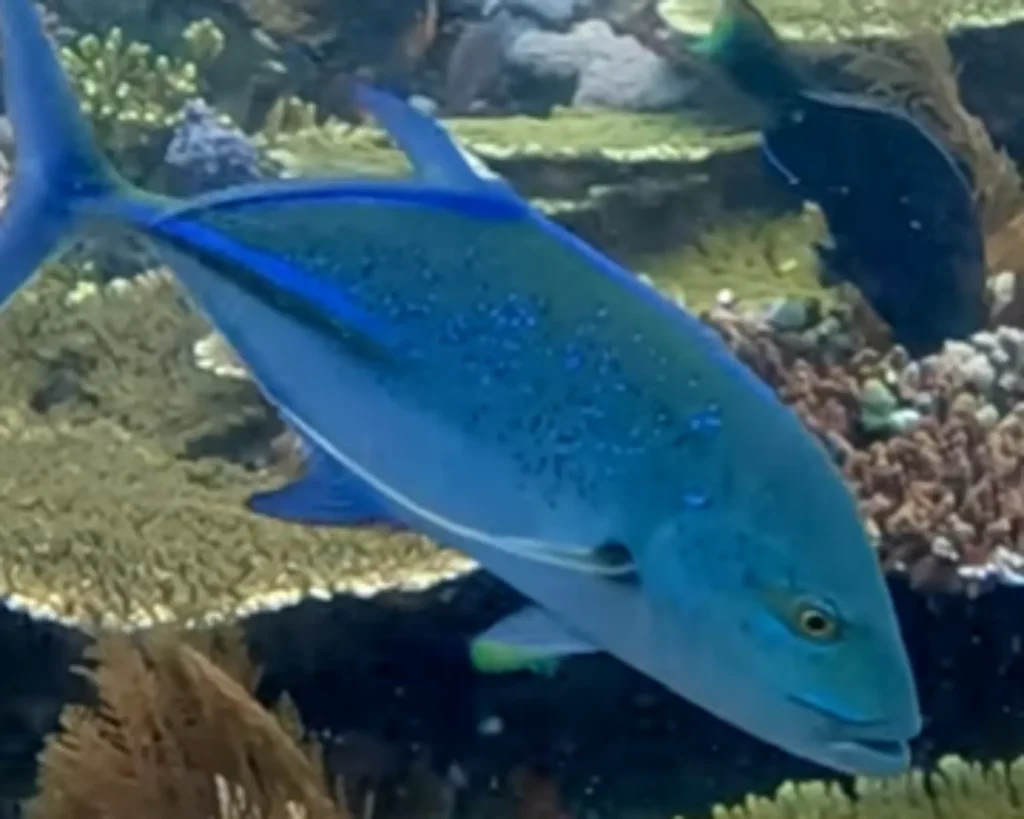
With their distinctive blue fins, Bluefin Trevally inhabit coral reefs and coastal waters in the Indo-Pacific region. They are known for their agility and are often found in shallow waters, where they hunt smaller fish and crustaceans.
-
Golden Trevally (Gnathanodon speciosus)
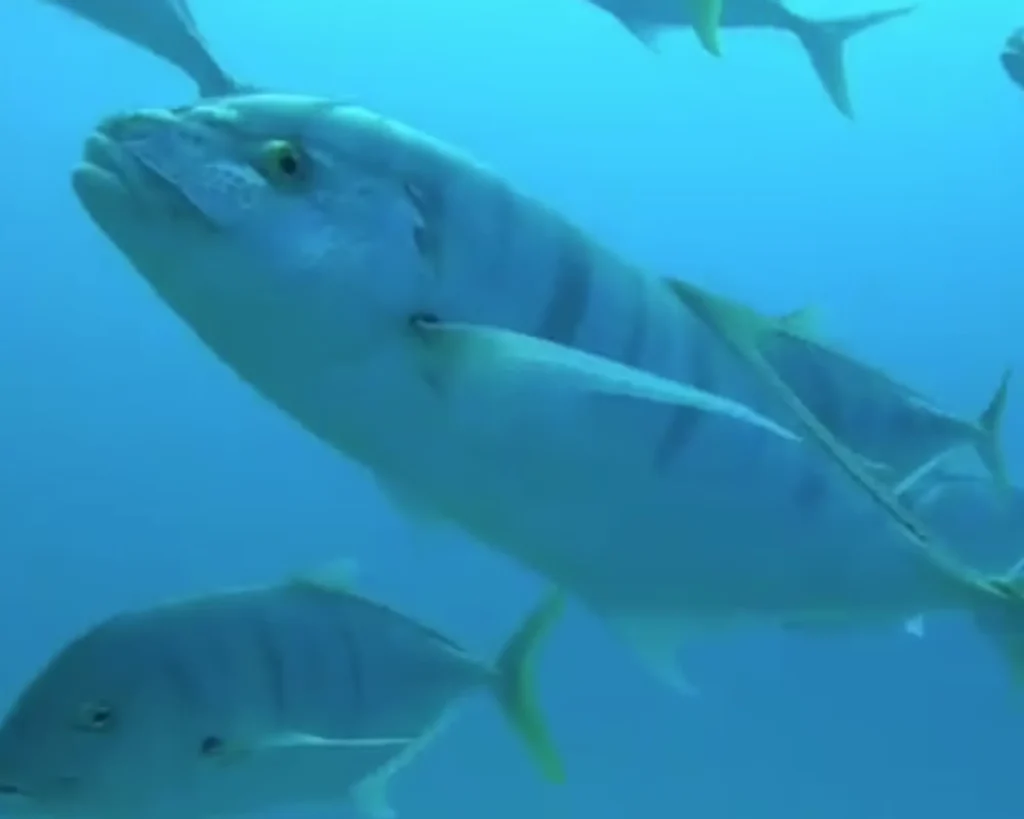
Recognizable by their striking golden-yellow coloration, Golden Trevally are found in tropical waters of the Indian and Pacific Oceans. They are often found in schools near coral reefs and are known for their symbiotic relationship with larger marine animals, such as sharks and rays.
-
Diamond Trevally (Carangoides orthogrammus)
Characterized by their diamond-shaped scales and silver coloration, Diamond Trevally inhabit coastal waters and estuaries in the Indo-Pacific region. They are prized by anglers for their strong fighting abilities and are known to feed on a variety of smaller fish and crustaceans.
-
Black Trevally (Carangoides armatus)
The Black Trevally, distinguished by its dark coloration, primarily inhabits open waters. Normally diet consists of small fish and squid. This species plays a significant role in the marine food chain, particularly in deeper ocean realms, contributing to the diversity and ecological balance of marine life in these areas.
-
Bigeye Trevally (Caranx sexfasciatus)
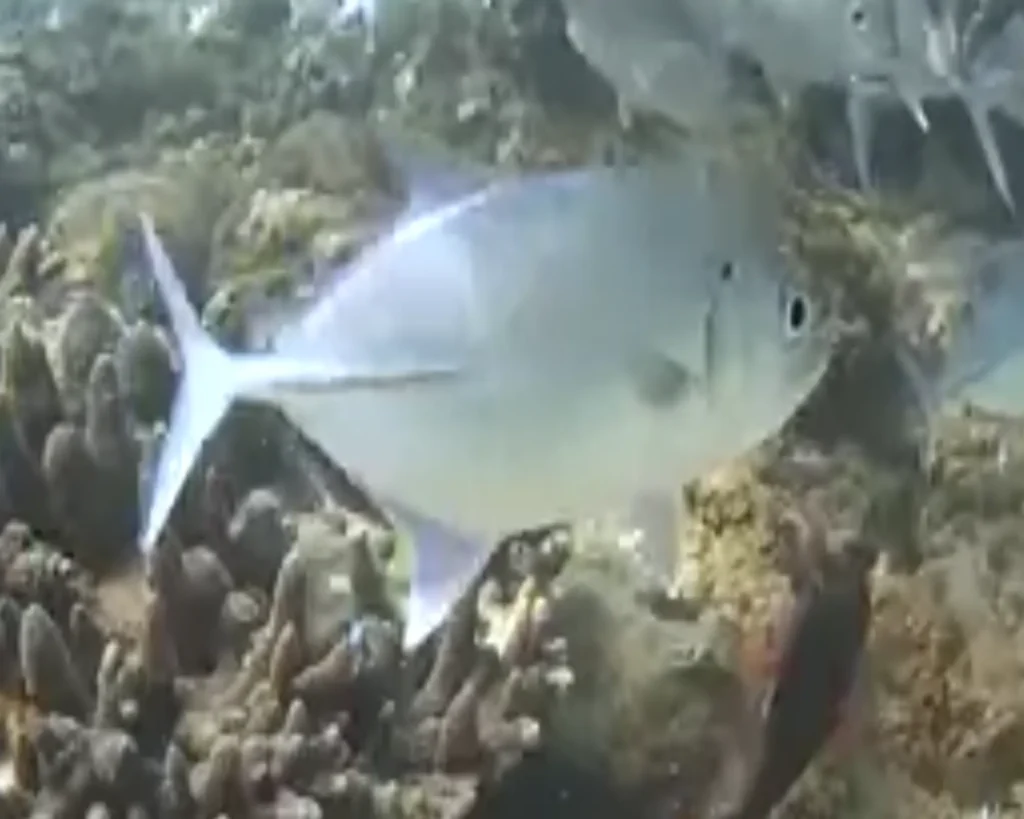
Recognizable by its large eyes and silver body, the Bigeye Trevally is commonly observed in schools around reefs and lagoons. Normally feeds small fishes, crustaceans, and cephalopods. The schooling behavior of the Bigeye Trevally is crucial for the ecosystem, aiding in the control of smaller reef organism populations and maintaining ecological stability.
-
Yellowspotted Trevally (Carangoides fulvoguttatus)
Found in tropical and subtropical waters, the Yellowspotted Trevally is characterized by yellow spots and a sleek body. It primarily feeds on small fish and invertebrates. Active in coral reef and lagoon ecosystems, this species contributes to the balance of marine environments by preying on various smaller organisms.
Characteristics of Trevally Fish:
Trevally fish share common traits that distinguish them within marine ecosystems:
-
Physical Appearance:
These fish typically feature streamlined bodies, forked tails, and prominent dorsal fins. Sizes vary from smaller species measuring a few inches to larger ones exceeding 100 pounds.
-
Feeding Behavior:
Trevally fish are opportunistic predators, preying on small fish, crustaceans, and cephalopods. They employ aggressive hunting tactics and often hunt in schools.
-
Habitat:
They inhabit a variety of marine environments, including coral reefs, coastal waters, estuaries, and open ocean areas. Trevally fish demonstrate adaptability to various conditions and thrive in regions of high biological productivity.
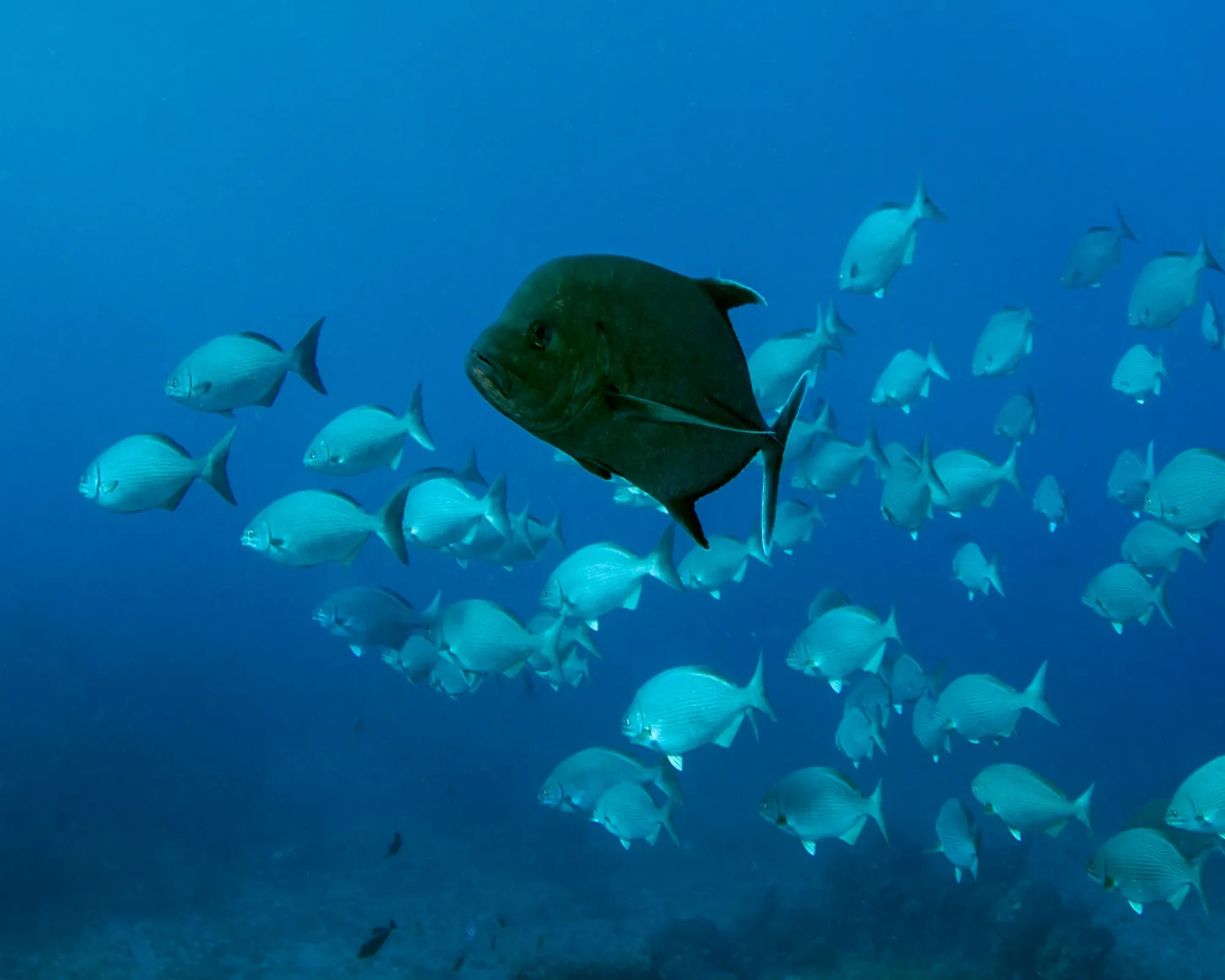
Habitat and Distribution:
Trevally fish are distributed globally in tropical and subtropical waters, with species-specific habitat preferences. They are commonly found in the Indo-Pacific region, including the Great Barrier Reef, the Maldives, Hawaii, and the Caribbean. Their habitats encompass coral reefs, rocky shores, sandy bottoms, and open ocean environments.
Trevally fish are marine species commonly distributed across the Atlantic, Indian, and Pacific Oceans. Predominantly fast-swimming predators, most Trevally species hunt in the waters above reefs and in the open sea. However, some species exhibit unique foraging behavior by digging in the sea floor for invertebrates.
Reproduction and Cycle of Life
Reproductive Behavior:
Trevally fish exhibit separate sexes, with many common species reaching reproductive maturity at specific lengths relative to their maximum size. The giant trevally, known for its potential to reach lengths of up to approximately 160 cm and weights of around 80 kg, achieves reproductive maturity between the ages of 3 and 5 years, at lengths spanning from 60 to 95 cm. With a lifespan averaging around 24 years, these milestones mark significant stages in its development.On the other hand, the smaller bluefin trevally, reaching lengths of up to 90 cm, attains sexual maturity at lengths between 30 and 40 cm, usually around 2 years of age.
Spawning Aggregations:
Numerous species of Trevally undertake long-distance migrations to breeding grounds where they aggregate in large numbers during spawning events. These spawning aggregations often occur at the outer edges of fringing reefs or near reef passages. The timing of these aggregations is often linked to rising water temperatures and lunar cycles.
Spawning Process:
During spawning, females release thousands of eggs into the water, which are then fertilized by sperm released by males. The fertilized eggs develop into larvae, which are tiny and drift in the ocean currents for periods often exceeding a month. However, the survival rate of these drifting larvae is remarkably low, with less than one in every thousand individuals successfully reaching the juvenile stage.
Juvenile Development:
As the drifting larvae settle out, they enter shallow inshore waters as juveniles. Over time, they may migrate to deeper reef environments as they continue to grow. However, the survival rate during this juvenile stage is also relatively low, with less than one in every hundred individuals surviving the 2 to 5 years it takes to reach maturity as an adult.
Understanding the reproductive behavior and life cycle of Trevally fish is crucial for their conservation and management, as it sheds light on the vulnerabilities and challenges they face at various stages of their development. Conservation efforts aimed at protecting breeding grounds and spawning aggregations are essential for maintaining healthy populations of Trevally species in marine ecosystems.
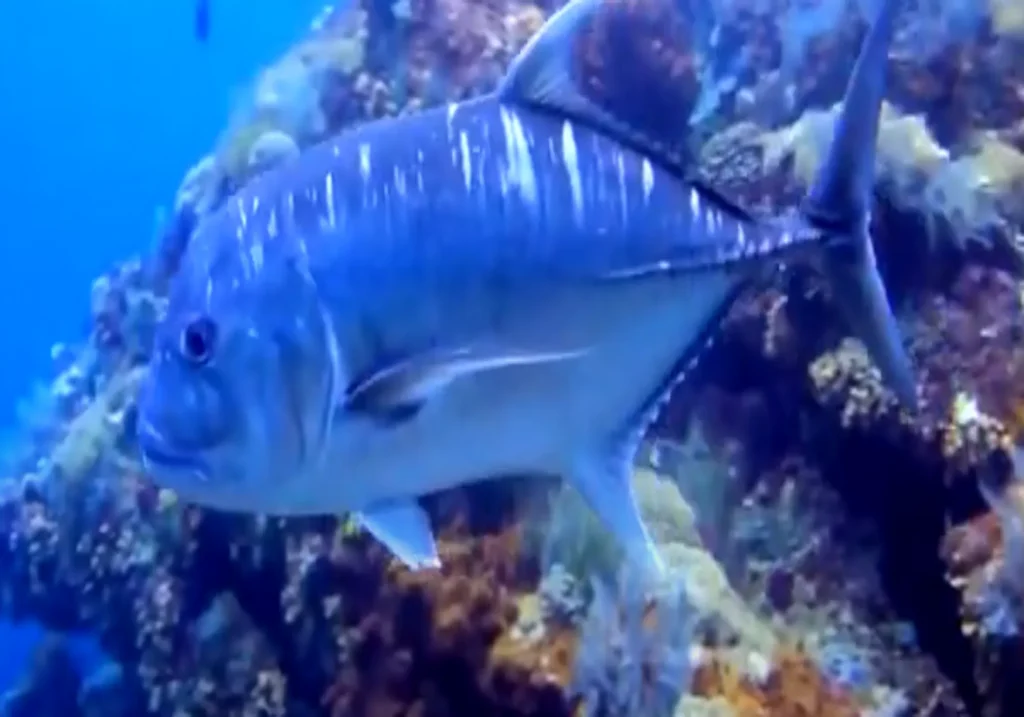
Mastering the Art of Trevally Fishing: Tips and Techniques
Fishing for Trevally is an exhilarating experience that demands a combination of skill, strategy, and understanding of the fish’s behavior. In this comprehensive guide, we’ll explore the techniques and tips to help anglers successfully target and catch these marvelous species.
Understanding Trevally Behavior:
Before delving into specific fishing techniques, it’s crucial to understand the behavior of Trevally fish. They are known for their predatory nature, often hunting in schools and exhibiting aggressive feeding behavior. Trevally are commonly found near coral reefs, inshore waters, and open sea environments, making these areas prime locations for anglers.
-
Selecting the Right Gear:
Choosing the appropriate fishing gear is essential for a successful Trevally fishing expedition. Opt for medium to heavy spinning or baitcasting rods with a sturdy reel that can handle the strength and speed of these powerful fish. Use braided fishing lines for increased sensitivity and fluorocarbon leaders to minimize visibility in clear water.
-
Lure Selection:
Trevally are opportunistic predators, making them responsive to a variety of lures. Popular choices include topwater lures, poppers, jigs, and swimbaits. The selection of lure depends on the fishing conditions, such as water depth, clarity, and the specific Trevally species you are targeting.
-
Time and Tide Considerations:
Understanding the impact of tides and time of day is crucial for Trevally fishing success. These fish are often more active during tidal changes, especially around dawn and dusk. Focus your efforts during incoming or outgoing tides, as Trevally are known to be more aggressive during these periods.
-
Locating Trevally Hotspots:
Identifying the right fishing spots is key. Look for areas with structure, such as coral reefs, drop-offs, and underwater formations, where Trevally may be hunting for prey. Pay attention to bird activity, as diving seabirds can indicate the presence of feeding Trevally below.
-
Live Bait Tactics:
If you prefer live bait, consider using small fish, shrimp, or squid. Present the bait naturally using a Carolina or slip-sinker rig, allowing the bait to move freely and attract Trevally. Ensure your hooks are sharp, as Trevally have tough mouths that require a strong hookset.
-
Active Casting Techniques:
For anglers who enjoy casting, target surface-feeding Trevally with poppers or surface lures. Cast near schools of baitfish or around submerged structures, creating a commotion to attract the attention of these aggressive predators.
-
Be Ready for a Fight:
Trevally are renowned for their powerful runs and acrobatic displays when hooked. Be prepared for a challenging fight, and maintain a firm grip on your rod to prevent the fish from breaking free. Utilize a drag system that allows the fish to tire itself out while avoiding the risk of snapped lines.
-
Practice Catch and Release:
Promote sustainable fishing practices by practicing catch and release. Trevally populations can be sensitive to overfishing, so consider releasing these incredible fish to ensure their continued presence in marine ecosystems.
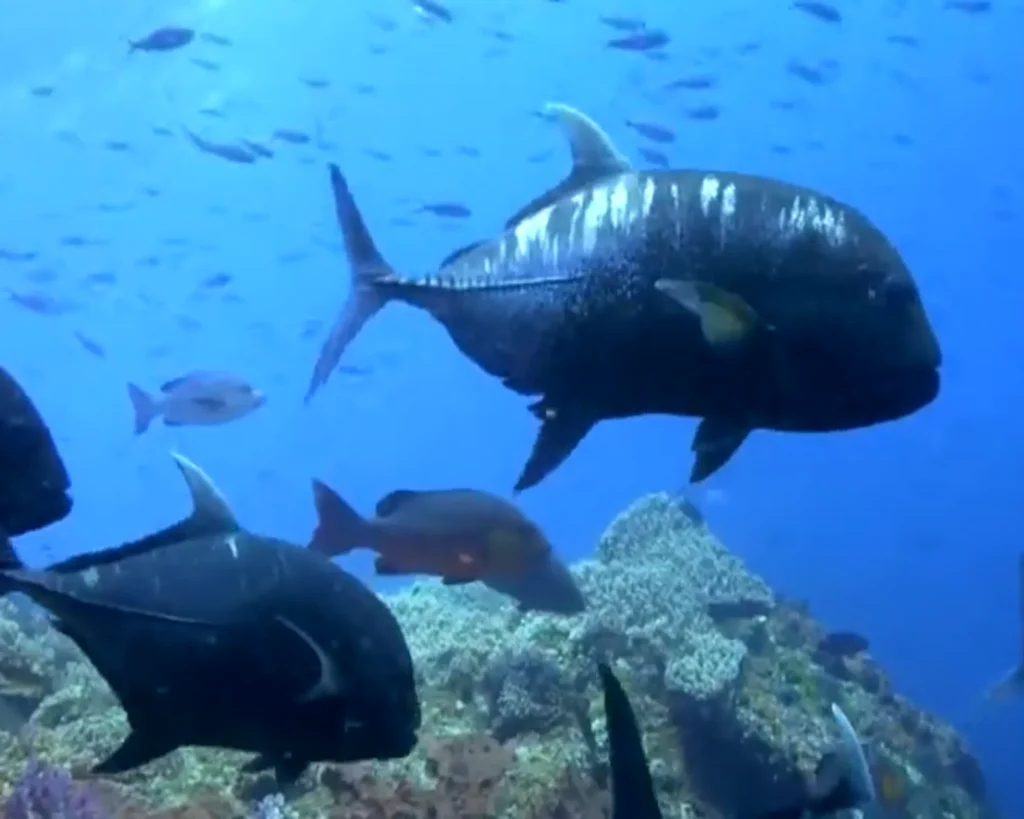
Conclusion:
Trevally fish are integral components of marine ecosystems, contributing to biodiversity and ecosystem dynamics. Understanding the diverse types, characteristics, and habitat requirements of Trevally fish is crucial for their conservation and sustainable management. By prioritizing conservation efforts, we can ensure the continued existence of these fascinating marine species for future generations to appreciate and enjoy.
Mastering the art of Trevally fishing requires a combination of knowledge, skill, and respect for these remarkable marine species. By understanding their behavior, selecting the right gear, and employing effective techniques, anglers can enhance their chances of a successful and memorable Trevally fishing experience. Remember to prioritize conservation efforts to ensure the sustainability of Trevally populations for future generations of anglers to appreciate and enjoy.
Read in Urdu Language Click Here.

